Forums
- Forums
- Duggy's Reference Hangar
- RAF Library
- Saunders-Roe SR.A/1
Saunders-Roe SR.A/1
Post a reply
- Go to Previous topic
- Go to Next topic
- Go to Welcome
- Go to Introduce Yourself
- Go to General Discussion
- Go to Screenshots, Images and Videos
- Go to Off topic
- Go to Works in Progress
- Go to Skinning Tips / Tutorials
- Go to Skin Requests
- Go to IJAAF Library
- Go to Luftwaffe Library
- Go to RAF Library
- Go to USAAF / USN Library
- Go to Misc Library
- Go to The Ops Room
- Go to Made in Germany
- Go to Campaigns and Missions
- Go to Works in Progress
- Go to Juri's Air-Raid Shelter
- Go to Campaigns and Missions
- Go to Works in Progress
- Go to Skinpacks
- Go to External Projects Discussion
- Go to Books & Resources
-
13 years agoSat Jul 29 2023, 08:52amDuggy
 Main AdminThe Saunders-Roe SR.A/1 originated during 1943 when Saro proposed the SR.44, a fighter which could be used in the vast ocean expanses of the Pacific Theater. It was similar in concept to the Nakajima A6M2-N "Rufe" (floatplane conversion of the infamous "Zero" fighter) and the Kawanishi N1K1 "Rex" floatplane fighters used with mixed success by the Imperial Japanese Navy. In May of 1944, a contract for three prototypes to Specification E.6/44 was awarded to Saro, and the SR.44 was subsequently re-designated SR.A/1.
Main AdminThe Saunders-Roe SR.A/1 originated during 1943 when Saro proposed the SR.44, a fighter which could be used in the vast ocean expanses of the Pacific Theater. It was similar in concept to the Nakajima A6M2-N "Rufe" (floatplane conversion of the infamous "Zero" fighter) and the Kawanishi N1K1 "Rex" floatplane fighters used with mixed success by the Imperial Japanese Navy. In May of 1944, a contract for three prototypes to Specification E.6/44 was awarded to Saro, and the SR.44 was subsequently re-designated SR.A/1.
The first prototype, TG263, was powered by two 3,230 lb s.t. Metropolitan-Vickers F2/4 Beryl MVB.1 turbojets, air being provided to both engines by a nose inlet. This layout helped prevent water being ingested into the engines, this being aided further by a scoop which could be utilized during water operations. The exhausts were angled five degrees outward from the fuselage so that the efflux cleared the aircraft's empennage. The combination of boat-hull type fuselage and jet propulsion was generally more efficient than the floatplane and prop layout of the aforementioned Japanese fighters. Two further prototypes were built, serials TG267 and TG271. The second prototype was fitted with 3,500 lb s.t. Beryls and the third with Beryls rated at their full 3,850 pounds of static thrust. Crew consisted of one pilot seated on an ejection seat in a pressurized cockpit. The canopy was initially a clear hood, but was later replaced with a "solid," reinforced canopy after the clear hood was lost in flight. The proposed armament consisted of four 20 mm Hispano Mk 5 cannon, each with 190 rounds, in the upper nose, and two 1,000 lb bombs or sixteen 120 lb unguided rockets; this was not installed, however.
The first prototype, TG263, took to the air for the first time on 15 July 1947, with the second and third prototypes following shortly thereafter. The aircraft were flown and tested for several years. Performance and handling were generally adequate for an aircraft of the SR.A/1's size and layout, but by this time the Second World War had ended and the requirement for a flying-boat fighter had basically disappeared. Land- or carrier-based fighters offered better performance and met the current requirements. The aircraft was briefly reconsidered during the Korean War, but the last SR.A/1 still flying (the first prototype) was finally retired in June 1951, the second and third prototypes having been lost in crashes. Fortunately, TG263 was preserved at various museums, and currently resides at the Southampton Hall of Aviation.
The Saunders-Roe SR.A/1 was uncommon because, not only was it a flying-boat fighter, it was both the first jet-powered flying-boat and the first jet-powered flying-boat fighter. It was also rather large for a fighter aircraft, yet still had an attractiveness to its lines. Unfortunately for Saro, it was basically a dead-end in fighter development, although the United States Navy evinced some interest in the concept as the Convair F2Y / F-7 Sea Dart, which met the same fate as the SR.A/1's development. It is interesting to imagine the service of the SR.A/1 had World War II not ended when it did.
Another first was,the two SR/A1 prototypes were fitted with the first two production Martin-Baker ejection seats built.
1943: Saro proposes SR.44 jet fighter seaplane for use in Pacific Theater.
May 1944: Specification E.6/44 announced.
July 1947: First prototype SR.A/1 TG263 rolled out.
16 July 1947: First flight of first prototype SR.A/1 TG263.
30 April 1948: First flight of second prototype, TG267.
17 August 1948: First flight of third prototype, TG271.
1949: TG267 crashed into the sea during air show rehearsal with loss of pilot Squadron Leader K. A. Major and aircraft.
August 1949: Program cancelled; first prototype used by Saro for experimental research under civil "B-type" registration G-12-1; third prototype sank in the Solent after hitting a submerged object; pilot Captain Eric Brown survived; parts of aircraft recovered.
June 1951: Last flying SR.A/1, TG263, retired to Cranfield Institute of Technology as an instructional airframe.
1966: TG263 purchased by Peter Thomas for his Skyfame Museum in Gloucestershire.
1978: TG263 to Imperial War Museum collection at Duxford.
1993: TG263 to Hall of Aviation Museum, Southampton.
Specifications SR.A/1
Designer(s) Sir Arthur Gouge, Henry Knowler
Mission Type Seaplane fighter prototype
Powerplant TG263: 2 x 3,230 lb (1,465 kg) s.t. Metropolitan-Vickers F2/4 Beryl MVB.1 turbojets;
TG267: 2 x 3,500 lb (1,588 kg) s.t. Metropolitan-Vickers F2/4 Beryl MVB.1 turbojets;
TG271: 2 x 3,850 lb (1,746 kg) s.t. Metropolitan-Vickers F2/4 Beryl MVB.1 turbojets
Dimensions
Span 46 ft (14.02 m)
Length 50 ft (15.24 m)
Height 16 ft 9 in (5.11 m)
Wing area 415.0 sq ft (38.55 m2)
Weights
Empty 11,262 lb (5,108 kg)
Loaded 16,225 lb (7,360 kg)
Take-off 16,255 lb (7,373 kg)
Max 19,033 lb (8,633 kg)
Performance
Max speed 512 mph @ hi altitude (824 km/hr)
Cruise speed ?
Initial climb rate 5,800 ft/min (29.5 m/s)
Service ceiling ?
Range ?
Endurance 2.4 hr
Armament (not installed) 4 x 20 mm Hispano cannon with 190 rpg in nose
2 x 1,000 lb (454 kg) bombs or 16 x 120 lb (54 kg) rockets under wings
Crew One
User UK (Ministery of Supply; intended for RAF service)
Number built Three (five ordered)
Construction Numbers ?
Serial Numbers TG263, TG267, TG271
Unofficial Nickname 'Squirt'
Test Pilots Saro: Geoffrey Tyson, J. O. Lancaster, John Booth
Royal Navy: Lieutenant Commander Eric Brown
MAEE: Squadron Leader Pete Major, Flight Lieutenant McCall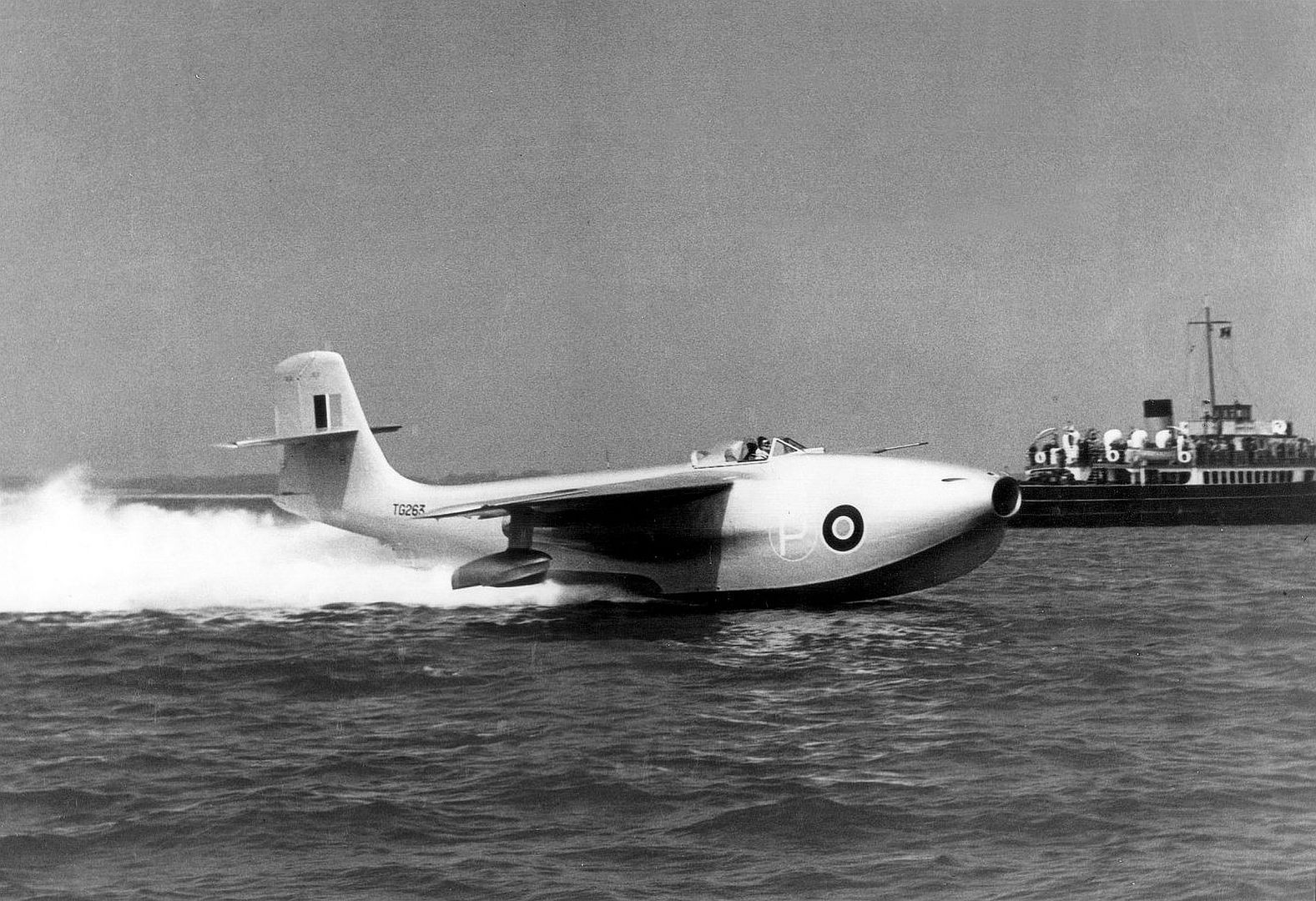
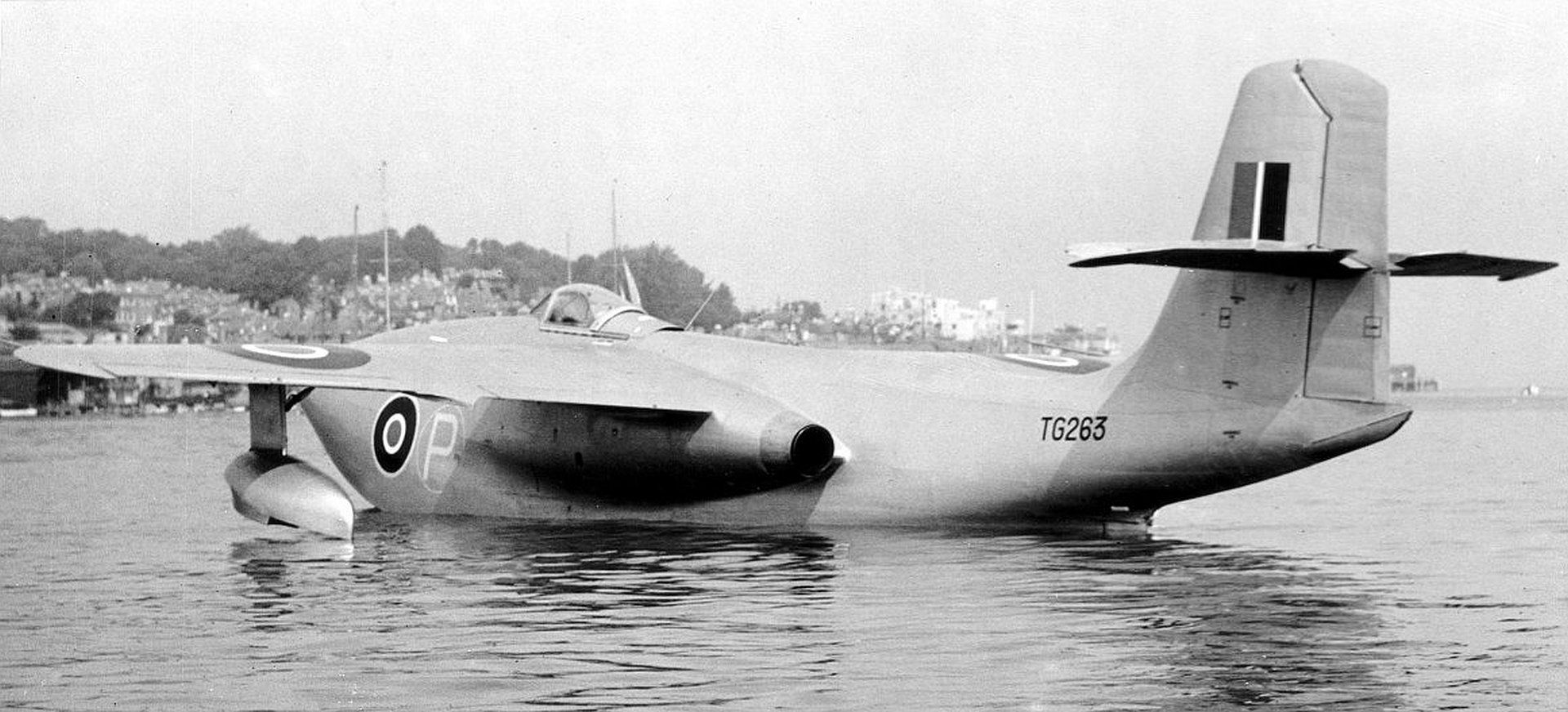
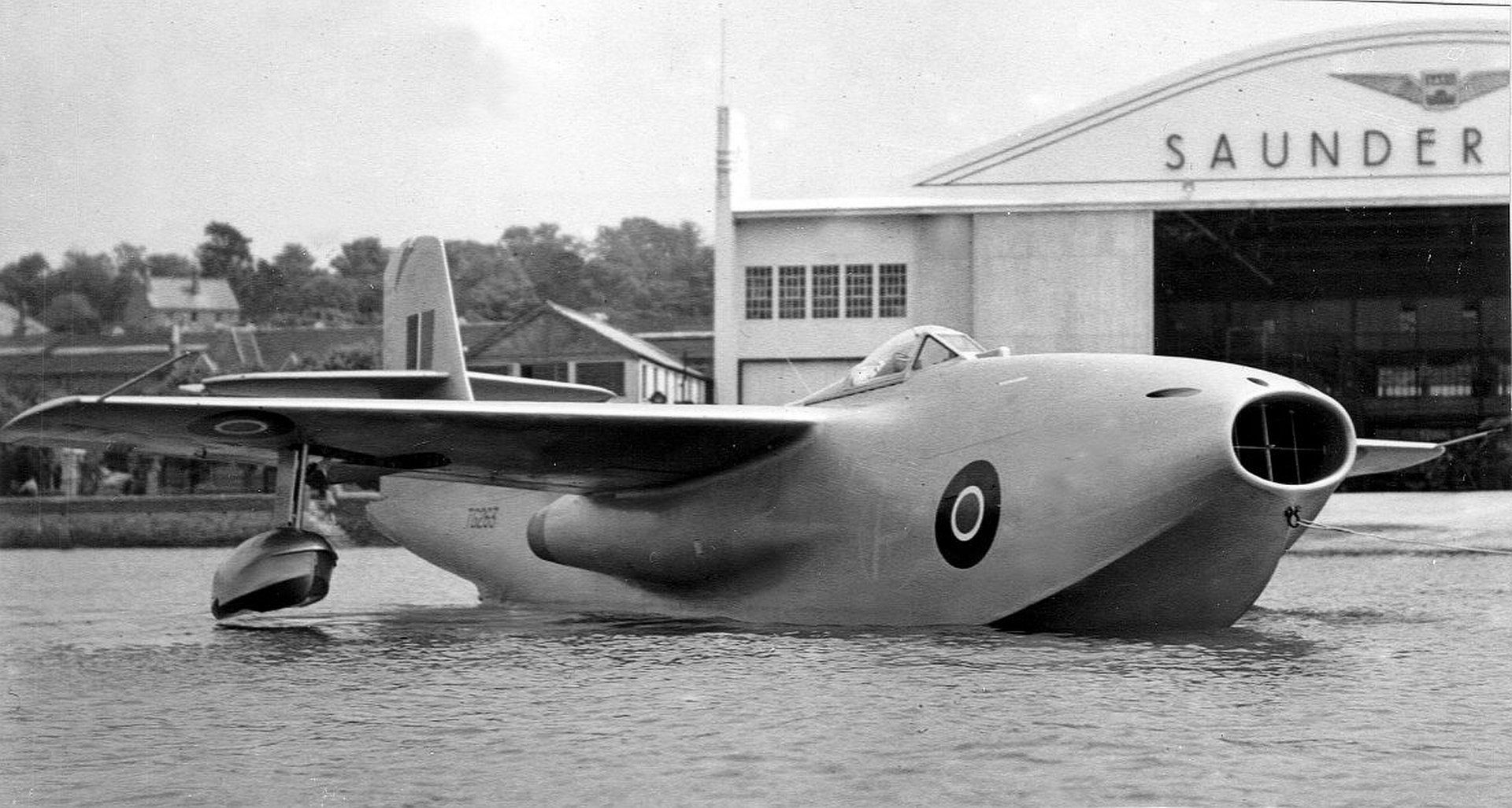

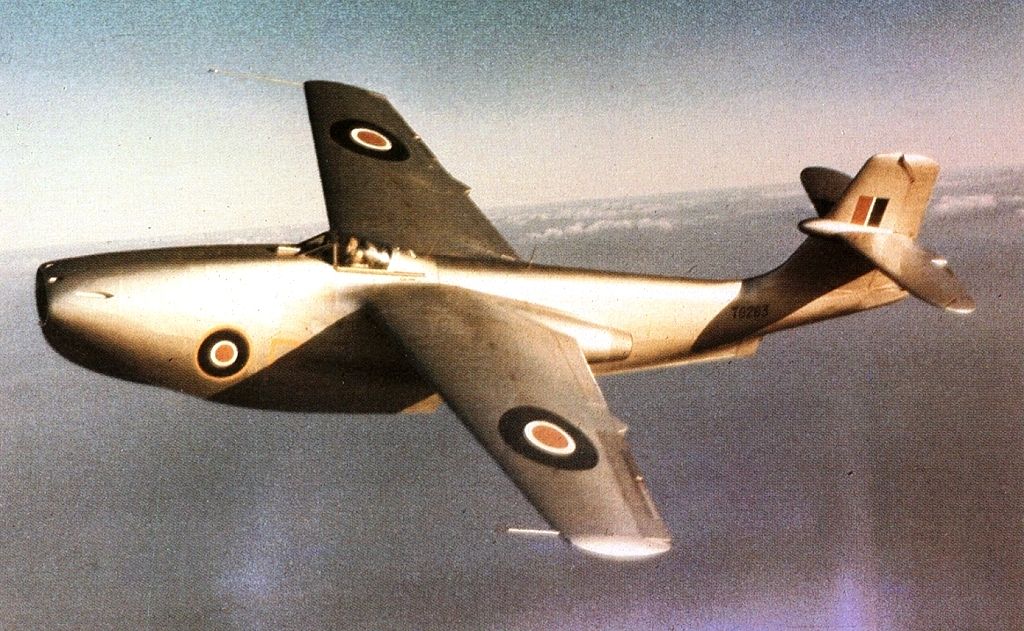
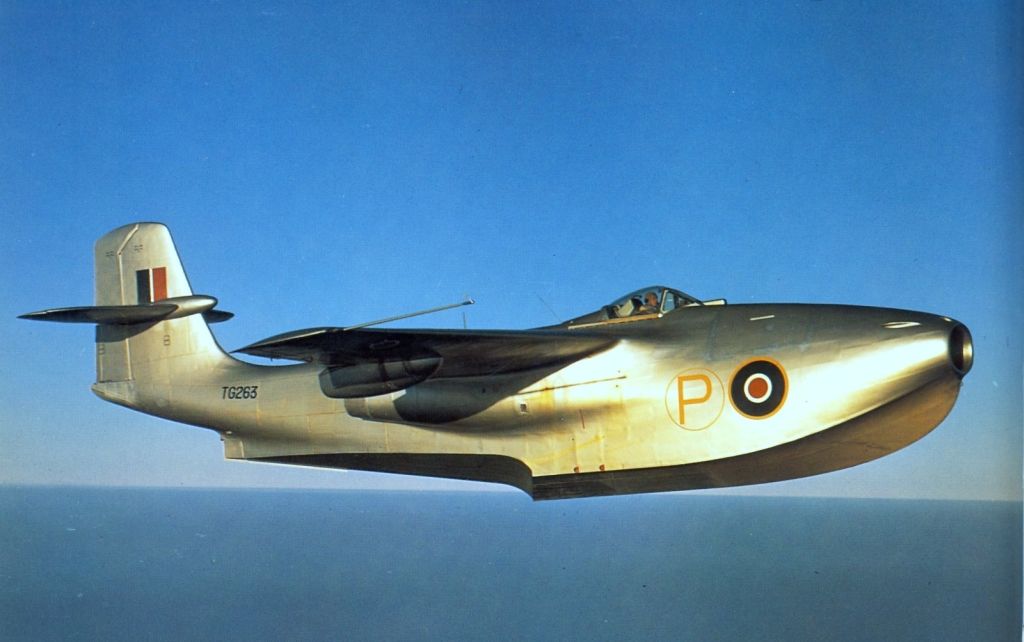
Regards Duggy.
Post a reply
- Go to Previous topic
- Go to Next topic
- Go to Welcome
- Go to Introduce Yourself
- Go to General Discussion
- Go to Screenshots, Images and Videos
- Go to Off topic
- Go to Works in Progress
- Go to Skinning Tips / Tutorials
- Go to Skin Requests
- Go to IJAAF Library
- Go to Luftwaffe Library
- Go to RAF Library
- Go to USAAF / USN Library
- Go to Misc Library
- Go to The Ops Room
- Go to Made in Germany
- Go to Campaigns and Missions
- Go to Works in Progress
- Go to Juri's Air-Raid Shelter
- Go to Campaigns and Missions
- Go to Works in Progress
- Go to Skinpacks
- Go to External Projects Discussion
- Go to Books & Resources
